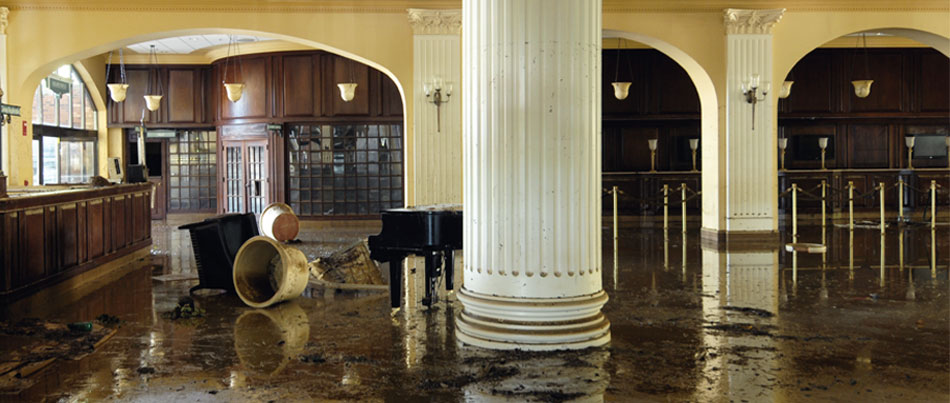Do's & Don'ts of Water Damages.
Do's & Don'ts of Water Damages.
Blog Article
Here below you will discover lots of reliable tips about Fire And Water Damage Prevention.

Though water gives life, water invasion on components where it's not expected to be can cause damages. It can peel away surface areas and also erode the foundation if the water saturates into your structure. Mold as well as mold additionally grow in a moist atmosphere, which can be harmful for your health and wellness. Houses with water damage scent old as well as musty.
Water can come from many resources such as typhoons, floods, burst pipes, leaks, as well as sewage system problems. In case you experience water damage, it would be good to recognize some security preventative measures. Right here are a few guidelines on how to handle water damages.
Do Prioritize House Insurance Coverage Protection
Water damages from flood dues to hefty winds is seasonal. However, you can additionally experience an unexpected flooding when a damaged pipeline all of a sudden ruptures right into your house. It would be best to have home insurance policy that covers both acts of God such as all-natural disasters, and also emergencies like busted plumbing.
Don't Fail To Remember to Turn Off Utilities
This reduces off power to your whole residence, stopping electric shocks when water comes in as it is a conductor. Do not forget to turn off the main water line shutoff.
Do Keep Proactive and Heed Weather Notifies
Tornado floods can be very unforeseeable. If there is a history of flooding in your community, stay positive and prepared. Pay attention to discharge cautions if you live near a river, creek, or lake . Take out valuables from the first stage and cellar, then placed them on the highest possible level. Doing so reduces potential home damage.
Don't Overlook the Roof
Before the climate turns frightful, make sure you have a roofing evaluation. It would certainly be sensible to get this solution yearly as it can mitigate intricate issues. You can avoid rain damages if there are no openings and also leakages in your roof covering. Your contractor will additionally care for faulty gutters or any other signs of weakening. This will stop water from flowing down your wall surfaces and also soaking your ceiling.
Do Focus On Tiny Leaks
A burst pipe doesn't happen overnight. Generally, there are red flags that suggest you have actually deteriorated pipelines in your house. For instance, you might discover bubbling paint, peeling wallpaper, water streaks, water stains, or leaking noises behind the walls. Eventually, this pipeline will certainly break. Preferably, you must not wait for points to escalate. Have your plumbing fixed before it causes enormous damage.
Don't Panic in Case of a Ruptured Pipeline
Keeping your presence of mind is essential in a time of dilemma. Due to the fact that it will stifle you from acting quick, stressing will only compound the trouble. Timing is essential when it comes to water damage. The longer you wait, the even more damage you can anticipate. Therefore, if a pipe bursts in your home, instantly shut down your primary water valve to remove the source. Disconnect all electrical outlets in the area or turn off the circuit breaker for that part of the residence. Call a trustworthy water damage reconstruction expert for aid.
Water gives life, water invasion on parts where it's not meant to be can result in damages. Houses with water damage scent stuffy as well as old.
Water damage from flood fees to hefty winds is seasonal. You may observe gurgling paint, peeling wallpaper, water touches, water discolorations, or leaking noises behind the walls. When it comes to water damage, timing is vital.
Some Do's & Don't When Dealing with a Water Damage
DO:
Make sure the water source has been eliminated. Contact a plumber if needed. Turn off circuit breakers supplying electricity to wet areas and unplug any electronics that are on wet carpet or surfaces Remove small furniture items Remove as much excess water as possible by mopping or blotting; Use WHITE towels to blot wet carpeting Wipe water from wooden furniture after removing anything on it Remove and prop up wet upholstery cushions for even drying (check for any bleeding) Pin up curtains or furniture skirts if needed Place aluminum foil, saucers or wood blocks between furniture legs and wet carpet Turn on air conditioning for maximum drying in winter and open windows in the summer Open any drawers and cabinets affected for complete drying but do not force them open Remove any valuable art objects or paintings to a safe, dry place Open any suitcases or luggage that may have been affected to dry, preferably in sunlight Hang any fur or leather goods to dry at room temperature Punch small holes in sagging ceilings to relieve trapped water (don't forget to place pans beneath!); however, if the ceiling is sagging extremely low, stay out of the room and we'll take care of it DO NOT:
Leave wet fabrics in place; dry them as soon as possible Leave books, magazines or any other colored items on wet carpets or floor Use your household vacuum to remove water Use TV's or other electronics/appliances while standing on wet carpets or floors; especially not on wet concrete floors Turn on ceiling fixtures if the ceiling is wet Turn your heat up, unless instructed otherwise

As a fervent person who reads on Reducing Your Risk Of Water And Fire Damage At Home, I thought sharing that piece was smart. Sharing is nice. You never know, you will be helping someone out. Many thanks for your time. Please come visit our site back soon.
Report this page